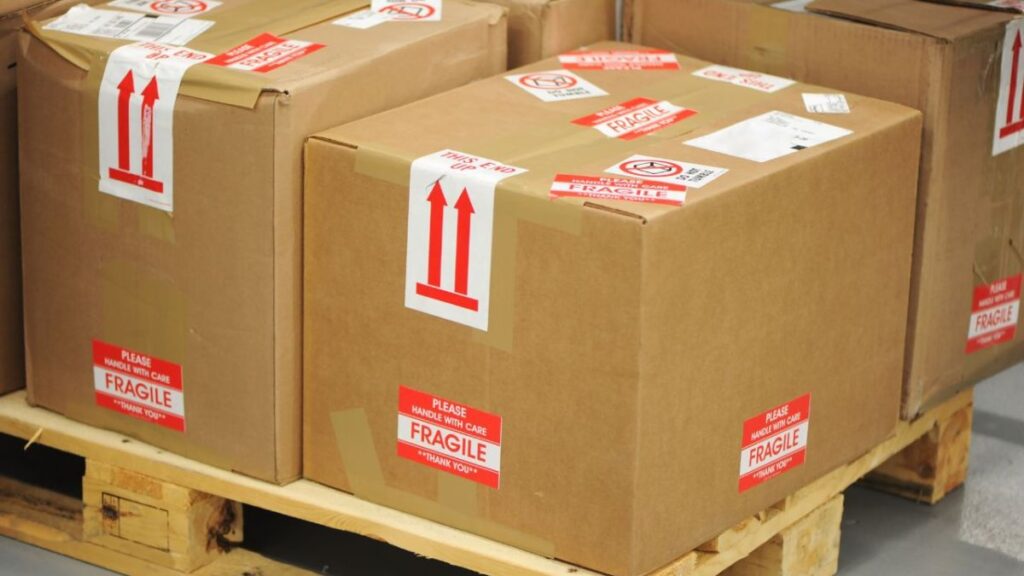Shipping fragile goods is both an art and a science. Whether you’re sending a single glass vase across the country or managing a business that regularly delivers delicate items, the goal is always the same: ensuring the package arrives in one piece. Damaged shipments not only cost money in replacements and returns but can also harm your reputation. By following a few essential best practices, you can greatly reduce risks and make sure fragile goods travel safely from point A to point B.
Choose the Right Packaging Materials
The first step to ensuring fragile goods arrive safely is choosing the right packaging materials. A simple box and tape won’t do the job—delicate items need protective layers and shock-absorbing materials to withstand bumps and handling during transit.
- Durable boxes: Always opt for new or high-quality corrugated cardboard boxes. For heavy or extremely delicate items, double-walled boxes provide extra strength.
- Cushioning materials: Use bubble wrap, foam peanuts, foam packaging inserts, air pillows, or paper padding to protect items from impacts. Each item should be wrapped individually before being placed in the box.
- Dividers: When shipping multiple fragile pieces, insert cardboard dividers or custom foam inserts to keep items from knocking into each other.
- Void fill: Eliminate empty spaces by filling gaps with cushioning materials. This prevents movement inside the box and reduces the risk of damage.
Wrap Items the Right Way
Wrapping is a critical step that often gets overlooked. Each fragile item should be carefully encased to prevent damage.
- Individual wrapping: Use bubble wrap to cover each item completely, securing it with tape. For extra protection, wrap delicate corners or edges twice.
- Double-boxing: For highly fragile goods like glassware, electronics, or ceramics, consider the double-box method. Place the wrapped item in a smaller box, then put that box inside a larger one filled with cushioning.
- Seal securely: Use strong packing tape to seal all box seams. Reinforce edges and corners, which are the most vulnerable points during transit.
Label Clearly and Accurately
Even with the best packaging, fragile shipments need to be clearly marked so handlers know to treat them carefully.
- Fragile stickers: Place “Fragile” and “Handle with Care” labels on multiple sides of the box.
- Orientation labels: If an item must remain upright, use “This Side Up” stickers.
- Shipping details: Ensure addresses and barcodes are legible and securely attached to avoid misrouting.
While labels don’t guarantee gentle handling, they do alert carriers and reduce the likelihood of rough treatment.
Pick the Right Shipping Carrier
Not all carriers handle fragile goods equally. Choosing the right shipping partner can make a significant difference in safe delivery.
- Reputation: Look for carriers with strong reviews for handling delicate items.
- Special services: Some providers offer fragile-item shipping services that include extra care, climate control, or white-glove handling.
- Insurance options: Choose a carrier that allows you to purchase additional insurance to cover the value of your goods.
Insure Your Shipment
Even with the best preparation, accidents can happen. Insurance offers peace of mind by covering replacement or repair costs if items are damaged during transit.
- Carrier insurance: Most major carriers offer standard insurance, but check coverage limits.
- Third-party insurance: For high-value shipments, consider additional coverage through third-party providers.
- Documentation: Keep photos of the item before and after packing as proof in case you need to file a claim.
Consider Environmental Factors
Fragile doesn’t always mean breakable—it can also mean sensitive to heat, cold, or moisture. Electronics, cosmetics, and certain foods require extra precautions.
- Temperature control: Use insulated packaging or cold packs if temperature fluctuations could damage your goods.
- Moisture protection: Plastic liners or waterproof packaging help guard against humidity and spills.
- Shock sensors: For highly sensitive shipments, invest in shock or tilt indicators that show whether a package was mishandled.
Test Your Packaging
Before sending out fragile shipments, run a test. Drop the packaged item from waist height on different sides. If the contents remain intact, you’ve likely packed it well enough for real-world shipping conditions.
Educate Your Team (If You’re a Business)
For businesses shipping fragile items regularly, training your staff is essential. Proper packing techniques, labeling standards, and handling practices reduce errors and keep customers satisfied.
Final Thoughts
Shipping fragile goods doesn’t have to be stressful. With the right packaging, labeling, carrier choice, and insurance, you can significantly minimize risks. Whether you’re an individual mailing a cherished keepsake or a business delivering delicate products to customers, these best practices ensure your items arrive safely and your recipients are delighted.
Handle with care—and your fragile goods will arrive intact every time.






